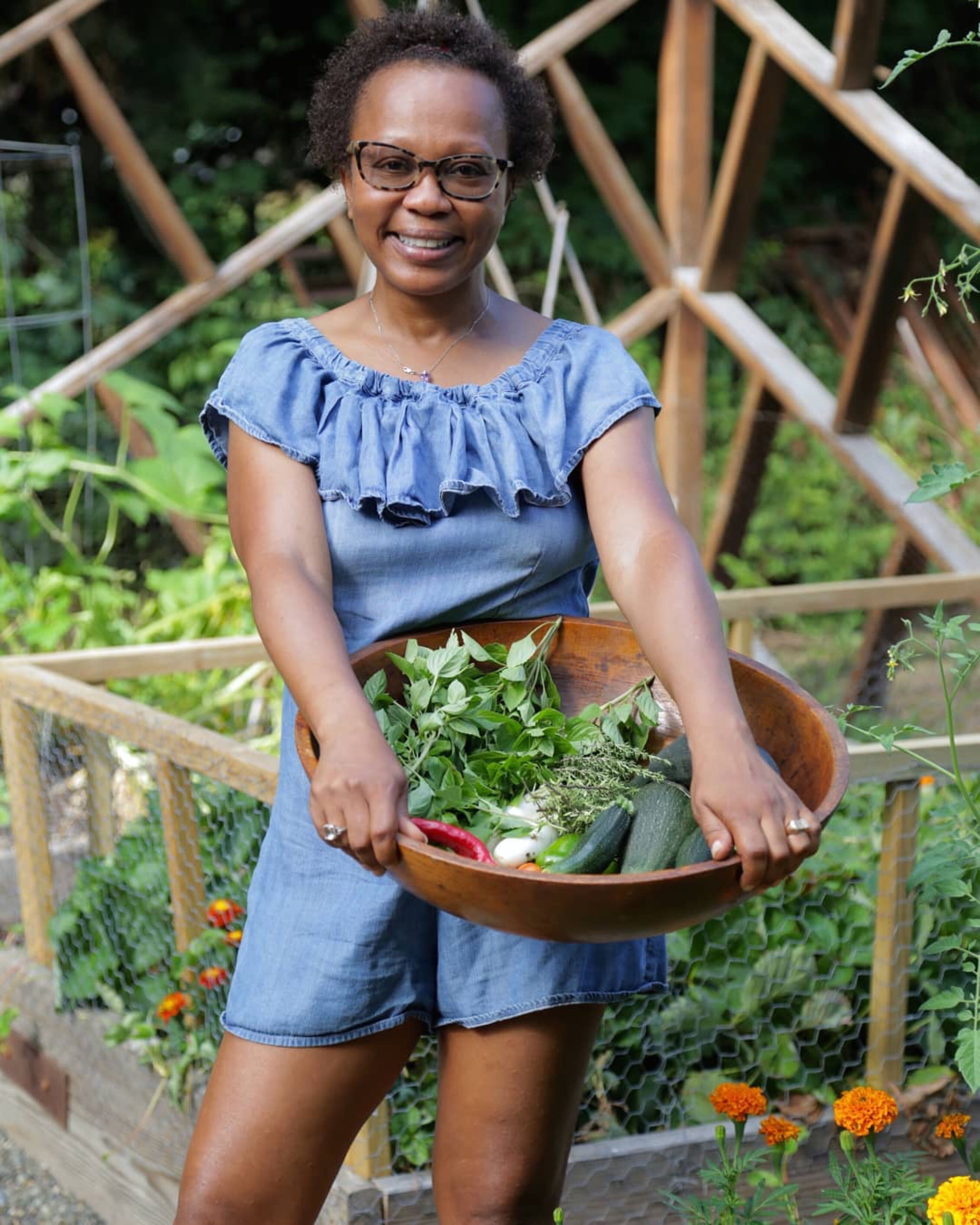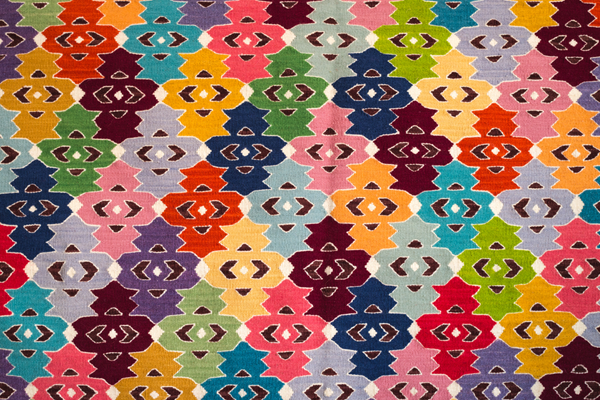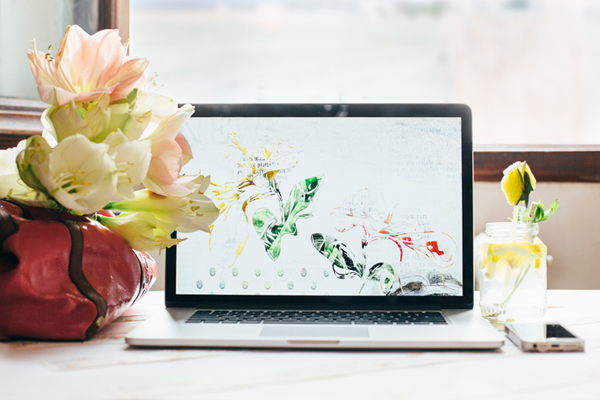Entrepreneur and longtime Brooklynite Nasozi Kakembo is taking the textile world by storm with her vibrant assortment of African prints. Her New York-based company, xnasozi—which takes its name from her own—operates out of the Bedford-Stuyvesant neighborhood and is actively filling the growing demand for vivid Ugandan pillows, aprons, baskets, yoga mats, butterfly chairs and more. Authenticity permeates her creations: the patterns and materials do not only look to Ugandan culture for reference, but are derived from Nasozi’s own heritage and bound into her commitment to the preservation of African civilization in the modern age—i.e. they’re seeping with genuine craftsmanship. Nasozi’s focus on the perpetuation of African culture makes her company as much a labor of love as a thriving business venture.
We recently discussed Nasozi’s work in the context of interior design—another one of her spheres of expertise. Nasozi proves acutely aware of the importance of thoughtfully matching lighting with textiles when arranging an interior, and we at Troy Lighting were excited to sit down with her to learn about her company, hear about her inspiration, get tips on enhancing the home and—of course—find out her best practice for pairing textiles and lighting.
1. Nasozi, your textile designs have been featured on Lonny and Apartment Therapy, and you’re quickly gaining a reputation as a Brooklyn artist who brings Ugandan influence to a New York market. How did you develop a name as a sought-after designer?
The quick answer is that my brand is quite literally a reflection of my upbringing and who I am. I grew up in a diverse family, who is both from and have lived all over the world, so I have been exposed to various cultural influences from birth. These were reflected in the foods we ate, the languages spoken at home, and the way my childhood homes were decorated. Ugandan baskets sat next to arc floor lamps, and it is this early reference that I draw upon for my own design aesthetic. America is a country made up of people from everywhere, and so I think that while my story is unique, the experience is universal, and many people desire to bring part of that global narrative into their homes and personal spaces.
2. Your work features a range of textiles, including African wax prints, West African indigo and mudcloth. What is the appeal of these particular materials and what makes them distinct from others?
Because African indigo and mudcloth are made from organic materials, the production of authentic pieces can only be completed seasonally. Indigo leaves must be available for production, as well as a certain type of leaf from a particular tree for mudcloth. This is fascinating reminder that even with art and design, we are at the mercy and grace of Mother Nature. I’m a minimalist and a naturalist at heart, so I find this relationship fascinating, and all of this is what makes African textiles unique.
3. Your patterns are immediately recognizable due to their stark geometric elements and bold colors. What inspires you to arrange shapes, lines and colors the way that you do? Do you base your work on traditional African design or use African decorative style as inspiration?
I am heavily inspired by simple geometries and reinterpretations of symmetry. I appreciate classic symmetry but I look for other ways to demonstrate it. “Same” can mean all different shapes, but the same number of shapes on each side of an object.
Once I began to study architecture and architectural history in college, I started to develop a vocabulary to express the design leanings that I already had. Sullivan’s “form follows function” is really fundamental to how I approach my work and I basically discovered I’m what you call a modernist. I saw elements of this philosophy in African prints and textiles.
Sometimes they might look “busy”, but when you look closely, it’s one pattern repeated over and over again (produced from block printing). I really started to distill the elements when I produced my first original textile collection. For the first time I saw the each symbol on its own, and each time you look at it, you can see something different.
Colors are inspired by objects I see in my everyday surroundings in the city, architecture on my travels (I still recall the technicolor turquoise and sienna clay roof of a house I saw in Brazil), and art I observe in museums, exhibitions and on the street.
4. Your textiles have clear authentic charm: they combine modern edge with a sense of heritage. How do your production processes contribute to this look? Are your products generally handmade by artisans?
The basis of all of my textiles are traditional and heritage pieces. I typically choose designs which I know have a historical significance attached to them as well. For example, many African print fabrics have a proverbial meaning which is told through the cloth being worn. The combination is introduced in the applications I use the textiles for. I grew up around many African textiles, but they were mostly always apparel. Architecture and home have been my obsession since I was a kid, so it was natural that I would explore a use for them in that context. When I started my collection, it was also important to me to include pieces from Uganda that were a reflection of my heritage, and would be relevant in contemporary homes. The handmade baskets for example are used traditionally during wedding ceremonies to carry the dowry, but in the US, they have a more utilitarian and decorative function. So while the object itself represents heritage, the application is modern, combining both elements.
5. Your company frequently partners with interior designers to enliven residential and hospitality spaces. How do you bring your own creative vision to their projects? Do any particular projects stick out in your mind?
My company offers a trade discount program that really allows us to engage with the design community, and I usually enter projects in this capacity. The popularity of the program is in large part due to the lookbooks that we develop each season and throughout the year. If I’m inspired by a space or have a new product, we’ll conduct a mini-shoot to keep the visuals fresh and interesting. This lookbook is circulated among the design community, and is also available online. So when designers visit the website, they can easily envision how my work fits into a project they're working on, or can keep in mind for the future. My favorite project of late is an art collector’s residence completed in Washington, DC by Delia Kenza. The home is ultra-modern with an industrial twist. In the midst of this are my colorful wax print pillows. Industrial modern can sometimes become a little stuffy, and my work really won’t allow that to happen haha.
6. Describe how your textiles can be used to transform a space. Do you have any tips or tricks for placing or coordinating your pillows, sisal baskets, butterfly chairs or ottomans? Do you stick to any specific design principles or follow the work of any influencers?
Building on the point I referenced above, my products really add character into a space. Many of the designs are whimsical, yet restrained, so it really doesn’t take much to make a statement in a room. As for design principles, I defer again to “form follows function.” I obviously love furniture and décor, but I only appoint my personal spaces with what I need and actually use. With that underlying principle, I fill in from there. I have a basket by the door for my keys, sunglasses and lip-gloss. I also have one on the dining room table for napkins. The butterfly chairs float; when my son has friends over, they’re in his room. When we need more space, they’re folded and put in a closet. I also got rid of the coffee table when my son started walking (at 9 months of age!) because I wanted the living room to be as unobstructed as possible. That’s when I discovered that my ottoman also made the perfect substitute. So my pieces are intended to be multi-purpose and mobile, heavily informed by living in a Brooklyn apartment for 12 years.
When pairing her textile designs with offerings from Troy Lighting’s collections, Nasozi opted for three distinctively modern designs: Odyssey, Ace and Silhouette.
Odyssey explores otherworldly lighting design in a midcentury modern pendant that features handblown, plated and smoked glass shades that offer a cool, mirrored effect. Each shade is stem-mounted on an asymmetrical, multi-branched frame handcrafted from wrought iron and finished in carbide black with polished nickel accents.

Ace is another mid-century modern delight with gloss opal globes that radiate from a central satin brushed brass orb, held in place by handworked iron arms in dark, textured bronze. Its arms include folded, flat bar material that evoke a strong retro feel.

Silhouette, modern and minimal, exhibits an airy design with precision clarity. Its center houses a gloss opal glass diffuser, which is surrounded by a geometric, handworked iron frame offered in gold or silver leaf in various configurations.

Nasozi remarks, “There is symmetry and pattern in all of these pendants, though they remain playful and interesting.” She acknowledges that these lighting selects are not symmetrical in the “traditional sense,” but nonetheless showcase the balance and distribution of elements necessary to classify them this way.
When asked what caused her to pair her collections with lighting in this way, Nasozi claimed that she focused on lighting that mirrors the structures inherent to her own work. “The geometries [shown in the lights] complement many of the patterns and shapes found in African textiles, and in the collections that I design.”
The principle underlying her own matching technique is that of distinguishing similar shape configurations in print designs and lighting structure: to identify corresponding angles and curves, edges and negative space. When placed together, the textiles and lighting fixtures should showcase the same distinguishing elements while maintaining enough difference to give the pair a sense of equilibrium.
We at Troy Lighting can’t help but recognize Nasozi is on to something here, the uneven and intuitive balance that lends itself to great design.









